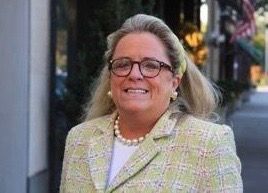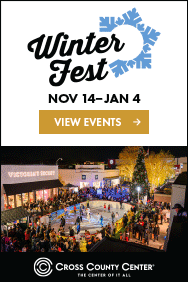From the Mayor: Political Polling

By Mary Marvin, Mayor of Bronxville
Dec. 1, 2021: Offering a change of pace, I decided to write about a topic that has always fascinated me – political polling. As background, I spent the early years of my career working for a D.C. pollster and strategist who only represented moderate Republican clients such as Nelson Rockefeller, Pete du Pont, Lamar Alexander and Bob Dole. (As a sidebar I was on the team that came up with the slogan Re-Pete Du Pont; cringe worthy, but it worked!) My fascination with polling of late is how inaccurate it has been in so many races so I delved into the Whys.
According to my research, in three of the last four national election cycles, the polls have significantly over estimated the performance of the Democratic candidates. Just two weeks ago in Virginia and New Jersey were stark examples.
The national polls as an aggregate in 2020 were the least accurate in 40 years and state level polls the worst in two decades. As example, in New Hampshire, Senator Susan Collins, never led in a single poll throughout the campaign, yet won handily.
It appears the crux of the problem is trying to gain a representative cross section of voters in the electronic age we live in with almost universal use of cell phones and caller ID. The Pew Research Center estimates that only 6% of the people polling firms call respond, down from nearly 50% in the late 1980’s.
With many Americans abandoning landlines, pollsters have been forced to call cellphones, but federal law prohibits them from making automated calls to these phones, making polling more expensive.
Also the dwindling number of people who still respond to polls are generally older, whiter, more educated and more likely to be female than the voting public.
Pollsters try to correct for this skew but the 2016 presidential election proved it didn’t work. Most polls predicted Hillary Clinton would win the national popular vote by 3 percentage points – it was only one point off, well within the margin of error.
But on the state level, pollsters missed a large last minute surge in support for Donald Trump in Wisconsin, Michigan and Pennsylvania.
The inaccuracies continued in the 2020 national elections. Biden won with 51.3% vs Trump 46.8% of the popular vote - a healthy margin of victory but most polls predicted a much larger margin and a “Blue Wave” of Democrats in the House which did not materialize. A postmortem report found that pollsters had overstated Biden’s victory margin by 3.9% - the industry’s worst performance in 40 years.
Reasons postulated for this unprecedented miscalculation include the new normal brought on by the pandemic. One theory is that the left of center voters were more likely to follow social distancing guidelines and stay home, making them more reachable by phone. Trump also repeatedly told his supporters not to trust “fake” polls, perhaps influencing them to ignore the calls.
Also in the case of the South Carolina Senatorial election, many voters expressed an interest in a fresh face, yet in the end due to the incredible perks of seniority, realized Lindsey Graham could deliver a lot more money to the State than the newbie, Jaime Harrison. It became an issue of simple economics.
Faulty polls don’t always tilt leftward, however. In 2012, many polls, including Gallup, predicted a narrow victory for Mitt Romney; instead Barack Obama was re-elected comfortably.
Just last September though, a majority of pollsters predicted that Californians would vote against recalling Gov. Gavin Newsom by a 14-point margin, but he survived by nearly double that.
In an effort to fix what has been an embarrassing streak, pollsters are putting together an amalgam of methods to reach voters including online, text based and interactive phone response systems in addition to landlines.
Pollsters are also changing what they ask. As example, Pew has added screening questions designed to measure a respondent’s trust in institutions and weigh the mistrusting responses more heavily since they are more likely to be underrepresented.
The jury is out on whether to trust polls. Some experts say that all polls have a margin of error so a two point “upset” isn’t really a fair evaluation of the pollster.
In addition, because polls are snapshots in time, they can mislead, since events can change how people vote right up to the last minute. A great example of this was FBI Director Comey’s announcement that he was looking into Hilary Clinton’s emails just eleven days before the 2016 election.
In the end, most political experts believe that despite the significant miscalculations of late, the industry will continue as polling is just too ingrained and attached to the American political process.
Government & History Directory
Bronxville is a quaint village (one square mile) located just 16 miles north of midtown Manhattan (roughly 30 minutes on the train) and has a population of approximately 6,500. It is known as a premier community with an excellent public school (K-12) and easy access to Manhattan. Bronxville offers many amenities including an attractive business district, a hospital (Lawrence Hospital), public paddle and tennis courts, fine dining at local restaurants, two private country clubs and a community library.
While the earliest settlers of Bronxville date back to the first half of the 18th century, the history of the modern suburb of Bronxville began in 1890 when William Van Duzer Lawrence purchased a farm and commissioned the architect, William A. Bates, to design a planned community of houses for well-known artists and professionals that became a thriving art colony. This community, now called Lawrence Park, is listed on the National register of Historic Places and many of the homes still have artists’ studios. A neighborhood association within Lawrence Park called “The Hilltop Association” keeps this heritage alive with art shows and other events for neighbors.
Bronxville offers many charming neighborhoods as well as a variety of living options for residents including single family homes, town houses, cooperatives and condominiums. One of the chief benefits of living in “the village” is that your children can attend the Bronxville School.
The Bronxville postal zone (10708, known as “Bronxville PO”) includes the village of Bronxville as well as the Chester Heights section of Eastchester, parts of Tuckahoe and the Lawrence Park West, Cedar Knolls, Armour Villa and Longvale sections of Yonkers. Many of these areas have their own distinct character. For instance, the Armour Villa section has many historic homes and even has its own newsletter called “The Villa Voice” which reports on neighborhood news.
Link to Village of Bronxville One Square Mile Monthly Newsletter
Village of Bronxville Administrative Offices
337-6500
Open 9:00am - 4pm excluding holidays and weekends
Bronxville Police Department
337-0500
Open 24 hours
Bronxville Parking Violations
337-2024
Open 9:00am - 4pm excluding holidays and weekends
Bronxville Fire Deparment
793-6400













